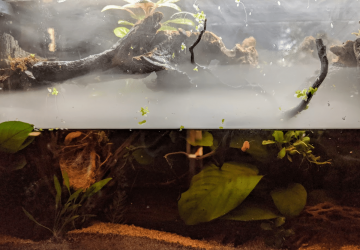Can I ask just out of interest why you are interested in using terestial plants as a source to remove nitrates from your tank water column?
As far as I know, though to be entirely honest I have not researched this much at all before, terestial plants does not remove very much nitrate from tank water columns
I have always used floating aquatic plants such as water lettuce and silva natans as wells as having heavily planted tanks as an excellent source to remove nitrate from my tanks as I had high nitrate straight (40+ ppm) from water mains taps so water changes did neglible changes to nitrate levels.
Though Byrons very interesting quotes from Diana Walstead about either roots or leaves intake was something I had not considered previously but very valid points to consider when choosing plants for you tank especially if you have high nitrates, a very intersting read nonetheless.
There are definately some product out there in various LFS that claims to remove nitrates, but tbh I do not have much faith in those as have always preferred the more natural ways to remove nitrate.
However I have considered in having a sump tank with lots of plants to remove nitrates when i thought about having cichlids only set up as I have very hard water and these fish species love to destroy or munch on plants hence that consideration.
As far as I know, though to be entirely honest I have not researched this much at all before, terestial plants does not remove very much nitrate from tank water columns
I have always used floating aquatic plants such as water lettuce and silva natans as wells as having heavily planted tanks as an excellent source to remove nitrate from my tanks as I had high nitrate straight (40+ ppm) from water mains taps so water changes did neglible changes to nitrate levels.
Though Byrons very interesting quotes from Diana Walstead about either roots or leaves intake was something I had not considered previously but very valid points to consider when choosing plants for you tank especially if you have high nitrates, a very intersting read nonetheless.
There are definately some product out there in various LFS that claims to remove nitrates, but tbh I do not have much faith in those as have always preferred the more natural ways to remove nitrate.
However I have considered in having a sump tank with lots of plants to remove nitrates when i thought about having cichlids only set up as I have very hard water and these fish species love to destroy or munch on plants hence that consideration.


